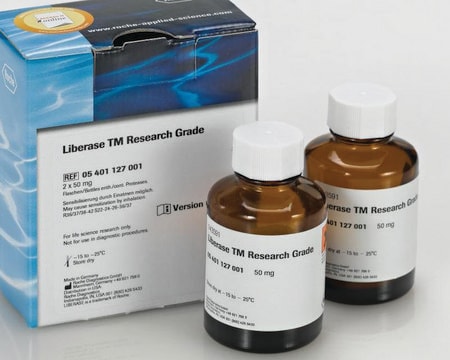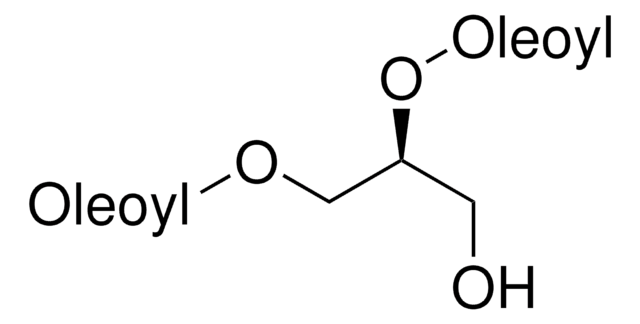841138C
Avanti
Egg PG
Avanti Research™ - A Croda Brand
Sinónimos:
L-α-phosphatidylglycerol (Egg, Chicken) (sodium salt)
About This Item
Productos recomendados
assay
>99% (TLC)
form
liquid
packaging
pkg of 1 × 2.5 mL (841138C-25mg)
pkg of 2 × 4 mL (841138C-200mg)
pkg of 5 × 4 mL (841138C-500mg)
manufacturer/tradename
Avanti Research™ - A Croda Brand
concentration
10 mg/mL (841138C-25mg)
25 mg/mL (841138C-200mg)
25 mg/mL (841138C-500mg)
lipid type
phosphoglycerides
shipped in
dry ice
storage temp.
−20°C
SMILES string
[H][C@@](COP([O-])(OCC(O)CO)=O)(OC(CCCCCCC/C=C\CCCCCCCC)=O)COC(CCCCCCCCCCCCCCC)=O.[Na+]
InChI key
FJXDNGDRHUDFST-XQYKCTAGSA-M
General description
Application
- as a phospholipid to test the binding ability of SEIPIN, an integral membrane protein of endoplasmic recticulum
- as a standard for photodynamic treatment
- as a standard for the identification of phospholipids by thin layer chromatography and electrospray ionization-mass spectra (ESI-MS)
Biochem/physiol Actions
Packaging
Legal Information
signalword
Danger
Hazard Classifications
Acute Tox. 3 Inhalation - Acute Tox. 4 Oral - Carc. 2 - Eye Irrit. 2 - Repr. 2 - Skin Irrit. 2 - STOT RE 1 Oral - STOT SE 3
target_organs
Liver,Kidney, Respiratory system
Storage Class
6.1D - Non-combustible acute toxic Cat.3 / toxic hazardous materials or hazardous materials causing chronic effects
wgk_germany
WGK 3
flash_point_f
does not flash
flash_point_c
does not flash
Elija entre una de las versiones más recientes:
Certificados de análisis (COA)
It looks like we've run into a problem, but you can still download Certificates of Analysis from our Documentos section.
Si necesita más asistencia, póngase en contacto con Atención al cliente
¿Ya tiene este producto?
Encuentre la documentación para los productos que ha comprado recientemente en la Biblioteca de documentos.
Los clientes también vieron
Nuestro equipo de científicos tiene experiencia en todas las áreas de investigación: Ciencias de la vida, Ciencia de los materiales, Síntesis química, Cromatografía, Analítica y muchas otras.
Póngase en contacto con el Servicio técnico














